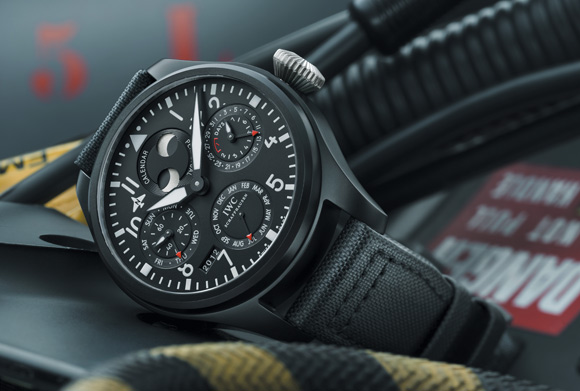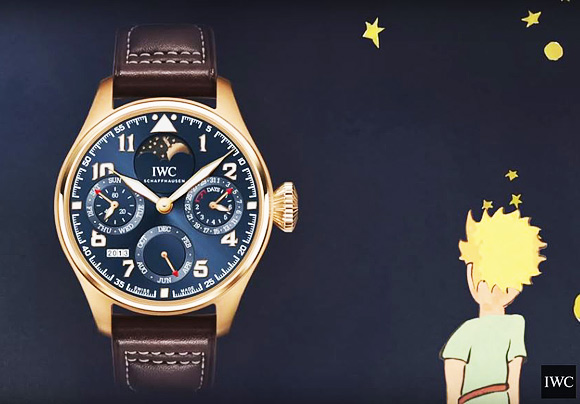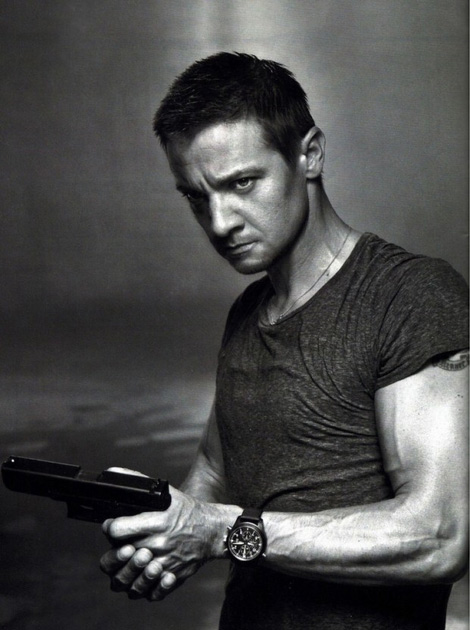At the end of August 2015, IWC unveiled its new Big Pilot’s Watch Edition “Patrouille Suisse”, which we presented a few days ago. This is the second aviator watch that the Schaffhausen-based manufacturer has dedicated to the Swiss aerobatics squadron, right in the slipstream of the Pilot’s Watch Chronograph Edition “Patrouille Suisse” released in 2011.
Pilot’s Watch is the name of an IWC collection that dates back to interwar period, when pilots took pocket watches with them on their flights and only a lucky few could afford purpose-built wristwatches. IWC did aviators a great service in the 1930s by producing its “Special Pilot’s Watch” that met their specific needs relating to flight conditions of the time, when they were often perched in a dark and unsteady cockpit. It featured an extremely legible dial with oversized and luminescent hands and numerals, a large winding crown that could be easily handled even with gloves, a rotating bezel with arrowhead index for keeping track of short times, a shock-protected balance-wheel bearing and a nonmagnetic escapement. The IWC Pilot’s Watch collection was born.
RAF, Spitfire, Top Gun and…
In 1940, IWC introduced the Big Pilot’s Watch 52 T.S.C., boasting a standout 55 mm diameter that remains a record for IWC. It innovated with its central hacking seconds device enabling pilots to synchronise their watches with to-the-second precision, along with an extra-long leather strap that meant it could be worn easily over the sleeve of a flight suit.

From 1949 onwards and for more than 30 years, Royal Air Force navigators and subsequently pilots flew with the famous Mark XI on their wrist. This relatively small 36 model was developed to the specifications of the RAF, which wanted a watch able to resist changes of pressure, variations in temperature and magnetic fields. Several other models were to follow as of 1993 with the Mark XII, the most recent example being the Mark XVII presented in 2012 and featuring a pure, classic dial that has earned it many admirers.
The chronograph function found its place in the collection in 1988 with the Pilot’s Watch Chronograph. 2002 saw the birth of the new Big Pilot’s Watch, inspired by the 1940s model, yet with a smaller 46 mm diameter, seven-day power reserve and Pellaton automatic winding

The Spitfire versions were introduced in 2003 and successively reinterpreted over the years in chronograph, double-chronograph or digital date and month perpetual calendar versions, including models equipped with in-house movements. Other timepieces bearing the legendary Top Gun name appeared in 2007 with the launch of a first chronograph. 2012 witnessed the big comeback of the Top Gun fleet with several new models, including a Big Pilot’s Watch Perpetual Calendar, the ultimate in terms of horological complications suited to fighter pilots, and endowed with a powerful aesthetic built around its titanium and ceramic case.

… the Little Prince
While IWC is clearly passionate about the modern brand of high-performance aviation embodied by fighter plane squadrons with high-profile names, it also leverages the aeronautical field for humanitarian purposes, inspired by the iconic figure of Antoine de Saint-Exupéry. Partnering the Succession Antoine de Saint-Exupéry – d’Agay society, IWC contributed to the creation of the Espace IWC-Saint-Exupéry in the Musée de l’Air et de l’Espace in Le Bourget, near Paris. Since 2006, in its capacity as patron of the Fondation Saint-Exupéry pour la Jeunesse, it has launched several commemorative series dedicated to the great writer and aviator. Each of them includes a one-of-a-kind platinum model auctioned on behalf of the Foundation.

The latest of these special series is the Pilot’s Watch Double Chronograph Edition “Le Petit Prince”, a successful blend of technology and poetry in which the typical pilot’s watch functions and characteristics – such as stop-hours, minutes and seconds devices, split-seconds to record intermediate times, a soft-iron inner case for antimagnetic protection and a sapphire crystal secured against drops in pressure – surround a jumping star weekday display appearing inside the faint line of its central circle.
A decidedly masculine timepiece (equivalent models for women being pretty thin on the ground!), the pilot’s watch conveys the virile values of aviation pioneers and fighter pilots. Courage and heroism are still admired today, as confirmed by men’s ongoing enthusiasm for IWC Pilot’s Watches.

Click on the large image at the top of the page for a selection of IWC Pilot's Watch models







